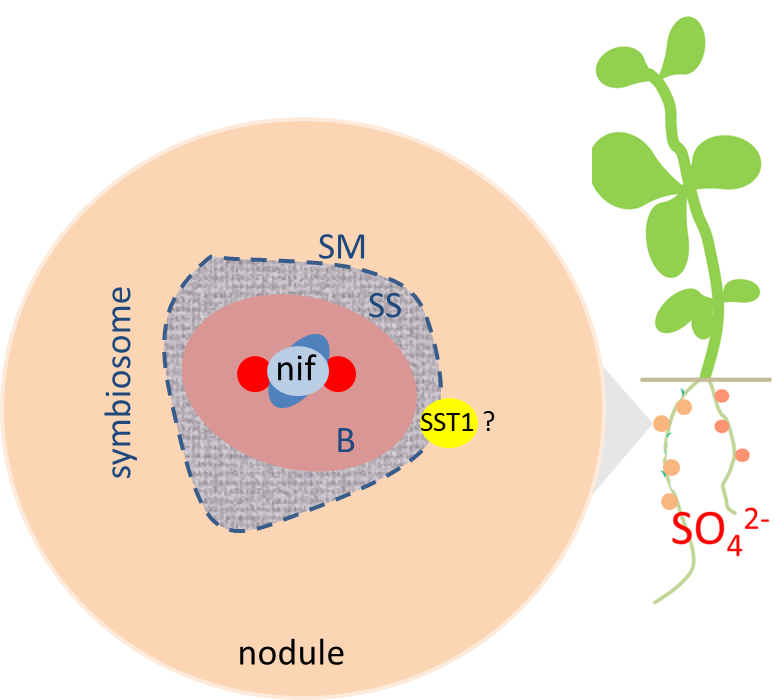|
Abstract
Unravelling the crucial
function of Sulfate on symbiotic N-fixation and a deep insight into
the S-Metabolism of Lotus spp. root nodules
Lotus japonicus, a variety of the birdsfoot trefoil (L. corniculatus)
is the model plant for tropical legumes like Soy. Legumes usually live in
symbiotic interaction with soil bacteria (rhizobia).
L. japonicus establishes nitrogen-fixing nodules in symbiosis with Mesorhizobium loti.
The root nodules harbor the bacteroids that are surrounded by a symbiosome membrane
(SM) formed from the plant plasma membrane.
The PBM plays a central role in the metabolic exchange between the organisms (Krusell
et al. 2005).
Besides nitrogen and sugars, the sulfur metabolism seems to play an important role for the functioning of the nitrogen fixation process.
Several studies support this: the sulfate transporter (SST1) was found one of the most abundant
SM proteins (Wienkoop
et al.2003);
evidence for a regulatory role of sulfate during drought acclimation and ethylene biosynthesis in nodules was presented (Larrainzar
et al.2009)
as well as the nodule function as important source of cysteine for the whole plant (Kalloniati
et al.2015).
However, up to now, the role of sulfur in nodule functioning, N-fixation and protein-synthesis remains unclear.
Determining the role of sulfate on N-fixation and AA/protein turnover
APPROACH: Isotopic-labelled sulfat nutrition will be supplied (see figure below).
Incorporation of the nutrient into key-proteins such as the
nitrogenase, will be analysed using mass spectrometry (MS). Distribution of
sulfate in the nodules/bacteroids will additionally be monitored using NanoSIMS.
Sulfur isessential for the synthesis of this enzyme and thus
for N-fixation. Not much is known about formation and breakdown/synthesis of e.g.
nitrogenase.
In the case of nodule senescence or malfunctioning of the SST1, nitrogenase synthesis is suppressed.
Hypothese:
• sulfate is important to fuel nitrogenase function
•upon nodule senescence or malfunctioning sulfate transport is blocked and nitrogenase synthesis inhibited
Key Questiosn:
• What is the role of sulfate for
symbiotic interaction? Is symbiosis established without sulfate? Do the bacteroids need sulfate and what do they use it for?

• Is it possible to monitor the incorporation of sulfate, taken up by the plant, into bacteroid proteins such as the nitrogenase? Is sulfate also systemically transported to the nodules??
• Is it possible to monitor the incorporation of sulfur into the plants
metabolites and proteins?
|


